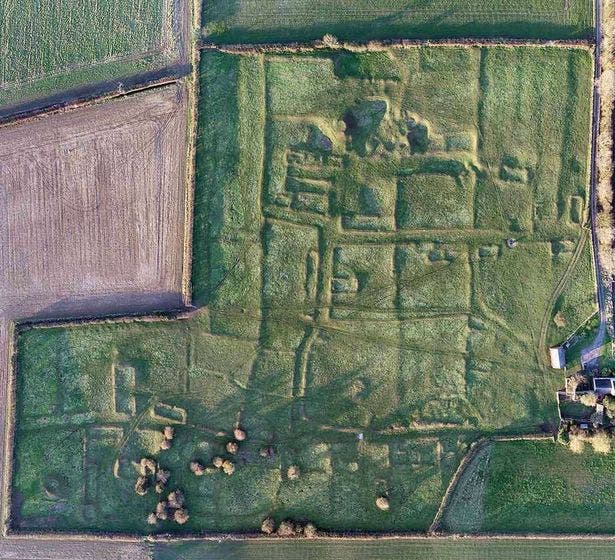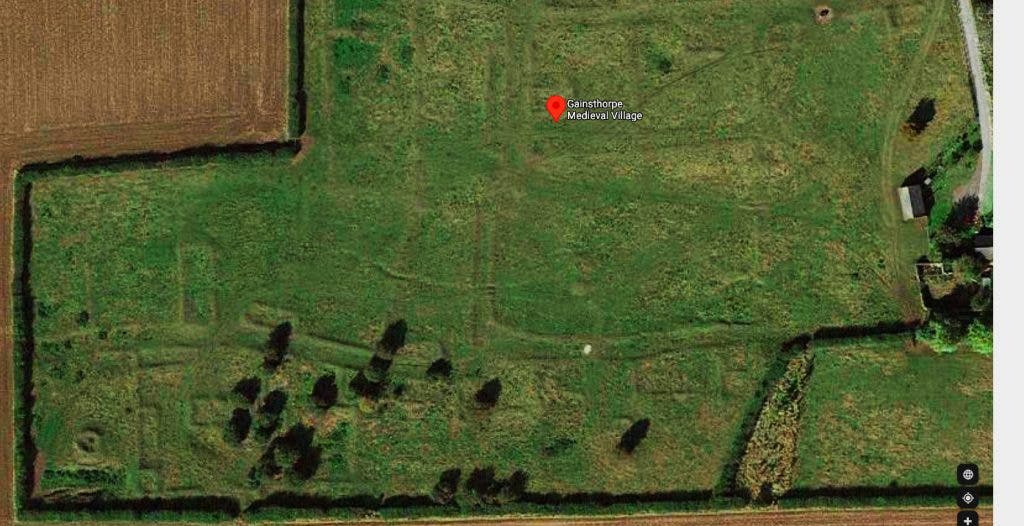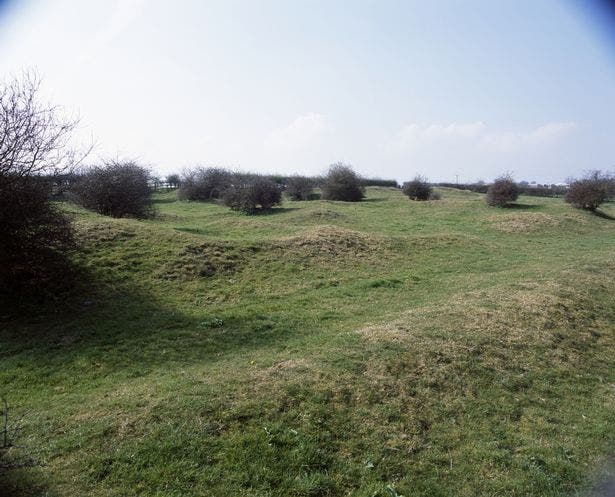Walk along the Lincolnshire countryside in eastern England, and you may come across a rather peculiar field. Look at it closely and you may get a feel that the site was inhabited once. Take a bird’s eye perspective — and you’ll be certain of it.

It is, indeed, the site of a village — ‘Gamelstorp’, as it is listed in the Domesday Book of 1086. Domesday Book, “The Great Survey” ordered by King William the Conquerer when he took over England, recorded much of England and parts of Wales — offering us a window into what the country was like a thousand years ago.
Back in those days, the Lord of Gamelstorp was someone called Ivo Taillebois, a powerful Norman nobleman, sheriff, and sidekick to William the Conqueror. Taillebois was granted land in Lincolnshire for his services, as well as in several neighboring areas. But he set his base in Lincolnshire.
After that, though, not much is known. Land at Gainsthorpe was granted to the small priory of Newstead-on-Ancholme (a few miles northeast of the village) in 1343. Then, at some point in the late 14th and 15th centuries, the village was ruled by the Duchy of Cornwall, suggesting that at least some part of the village survived, even though it had likely shrunken in size. By 1616, the village was definitely deserted. A survey for the Duchy of Cornwall noted ‘neither tofte, tenement or cottage standing’.

A den of thieves
Gamelstorp was long deserted when, in the 17th century, an antiquarian by the name of Abraham de la Pryme (1671–1704) passed through it. In two separate and somewhat contradictory descriptions from 1697, de la Pryme notes that there are about 200 ruined buildings in three abandoned streets.
De la Pryme mentions a local “tradition” of Tudor robbers to use the village as a base. As the story goes, these thieves were driven out by the inhabitants of other villages, leading to the complete abandonment of the villages. But de la Pryme himself doesn’t seem to believe this story.
“Tradition says that that town was, in times of yore, exceeding infamous for robberys, and that nobody inhabited there but thieves [..]But I fancy that the town has been eaten up with time, poverty, and pasturage.”
It’s not really clear why or when the village was abandoned. It could be due to the Black Plague, which killed 20-60% of the English population during the 14th century, or it could have a more benign explanation: wool farming. Wool became a very profitable business during the 13th and 14th centuries and several arable villages turned to sheep farming.
Gainsthorpe today
Traces of houses, roads, barns, even a church are still visible to the careful eye. The deserted village is still preserved in earthworks such as raised ridges and sunken hollows, centuries later. Three or four roads are still visible as hollow ways, with the layouts of at least 25 buildings and 15 other enclosures visible, surrounded by earthen banks.

It’s very likely that other parts of the village (such as the chapel it must have once had) survive somewhere south and west of the village. Historic England, a public body of the British Government, describes it thusly:
“The village, comprising a small group of houses, gardens, yards, streets, paddocks, often with a green, a manor and a church, and with a community devoted primarily to agriculture, was a significant component of the rural landscape in most areas of medieval England, much as it is today.”
“The monument comprises part of Gainsthorpe medieval rural settlement and includes some of the remains of the deserted village site, two paddocks, and the site of the manor with a fishpond and two dovecotes.”
“The properties are divided by a system of sunken trackways and are broadly similar in that they each consist of a large enclosure sub-divided by internal walls, with one or more of the smaller yards containing a complex of buildings. In many cases, gateways and doorways are clearly visible. In some cases, two or more properties appear to have been combined into a single larger complex, probably as a result of piecemeal desertion.”
The medieval rural settlement of Gainsthorpe has not been excavated, and neither have geophysical surveys been carried out at the site — and so its origins are unclear. There were at least 19 fields surrounding the village, occupying 108 acres (44 hectares), and the village also had a chapel, a windmill, and a bridge — so there’s a lot still left to be discovered about the abandoned settlement.
Hopefully, at some point, research can clarify the origins and history of the village. In the meantime, it remains one of England’s most mysterious villages.






